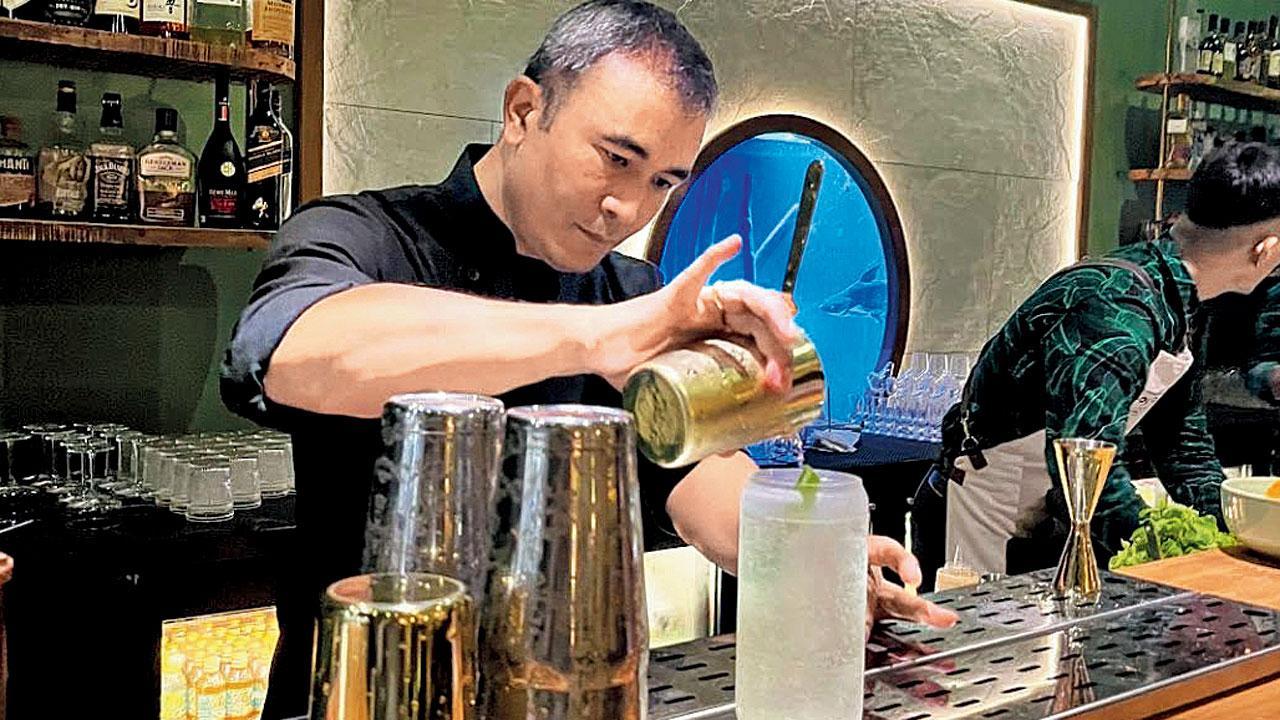Delhi’s celebrated mixologist-bar entrepreneur was in Pune. Sunday mid-day met up with Yangdup Lama to figure why it’s so easy to launch a bar, but complicated to nurture it to win awards

Yangdup Lama has designed the bar menu for Pune’s first Nikkei cuisine serving restaurant, Soy Como Soy
In his 26-year-long career as bartender, Yangdup Lama has won a bunch of coveted International accolades. His bar in the capital, Sidecar, was the only Indian bar to feature in the 2020 version of William Reed Group’s much-anticipated list of Asia’s 50 Best Bars. In 2022, while the list had four entrants from India; Sidecar moved up two spots on the list, making it to the 14th place. In 2020, Lama was also featured by Drinks International Magazine in the Bar World 100 list of the most influential people in the global beverage industry. He was the first Indian to make it to the list. The master bartender has now designed the bar menu for Pune’s first Nikkei cuisine (Peruvian ingredients cooked using Japanese techniques) serving restaurant, Soy Como Soy.
ADVERTISEMENT
Edited excerpts from the interview.
What made you want to take on cocktail programming at Soy Como Soy?
A decision to sign up for a project is always driven by the owner’s research and passion. I run two bars and have been a bartender all my life. So I understand that to want to create a great F&B experience, one has to be fully dedicated and passionate about what one is doing. In this case, it was Soy Como Soy’s Sandy Singh who was sitting with his wife at Sidecar a year ago. He came up to me and said he was a fan and though they had a flight to catch that day, they felt they had to come to Sidecar to understand what this bar is all about. That to me, expressed his interest and passion. It wasn’t just about business. He wanted me to work on their beverage menu, whenever the project materialised. This effort brought in the right synergies.
Their cuisine is different from what we serve at Sidecar, and the cocktails are derived from what the chef is doing in the kitchen. We wanted the ingredients to travel from there to the bar and present them in a way that appeals to Indian consumers. We try to achieve the idea of a zero-waste bar and make it as sustainable as possible. Instead of throwing away waste from the kitchen, the ingredients can be brought back to the bar.
There are so many good bars in India. What makes Sidecar so successful?
Sidecar is a ‘bartender’s bar’. The entire experience revolves around it. When you walk into Sidecar, the first thing you see is the long attractive bar; the bottles are an important part of the decor. People often ask me when I’m opening my next bar. It’s not that simple. Sometimes, when you scale up quickly, you end up doing everything else but what you love doing. I love bartending, and take a lot of pride in what my tribe does. The music that plays is also from my personal playlist. In fact, I was just making one of those lists before you arrived.
The tea cocktails at Sidecar are much loved. Does the Indian palate enjoy tea with alcohol?
The Indian palate is not used to tea cocktails at all; Most of India doesn’t drink great tea. The best quality leaves are exported. Also, we tend to boil our tea too much. I grew up in Kurseong in Darjeeling district, and I am very particular about my tea. The Makaibari Tea Estate happens to be very close to my home and I was thrilled to get an opportunity to collaborate with it. An interesting tea blend, called Summer Solstice, was made especially for Sidecar. We created the Makaibari Summer Solstice Sous Vide with Bianco Vermouth, London Essence Co. tonic water and lemon peel; and Makaibari First Flush is a light blend of Scotch with eucalyptus honey and B&G ginger pepper bitters.
Twenty six years is a long time. Have the expectations of ‘what a good bar is’ changed?
Everything has changed—the hospitality industry, the attitude of all players involved, and especially the consumer. That’s true for restaurants too. Earlier, if you started an Italian restaurant, you could use any quality of cheese or meat. Today, the consumer is well-travelled and informed. They have access to information and adequate exposure. They know what to expect and what they want.
Has the profile of students at your bartending school in Delhi changed too?
It certainly has. Back in the day, parents would often send children to be bartenders because they were not good at academics. There’s a lot more genuine interest these days. It’s a more viable career option and is taken seriously.
What would we find you ordering at your bar?
I’m not really a cocktail person; I like a simple Bourbon on the rocks. When I feel like getting a cocktail, I enjoy a good Manhattan.
Can we hope to see you open a place in Mumbai?
I want to, but the real estate prices make it unaffordable.
 Subscribe today by clicking the link and stay updated with the latest news!" Click here!
Subscribe today by clicking the link and stay updated with the latest news!" Click here!







